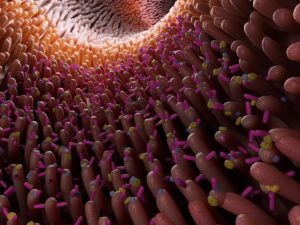TP53, the gene encoding the p53 protein, stands out as the most frequently mutated gene in cancers, affecting approximately 50% of patients. While the normal function of p53 is tumor suppressive, TP53 mutations result in gain or loss of function, promoting cancer initiation and progression.
This month’s recommended reading offers a comprehensive review of p53 activities, delving into the role of p53 mutants in cancer initiation, progression, and resistance to therapy. The article also explores various strategies for targeting p53 in cancer therapy. In its wildtype configuration, p53 serves as a tumor suppressor. Thus, its activation is triggered by stress signals. As a sequence-specific transcription factor, it targets genes related to apoptosis, cell cycle regulation, and senescence, serving as a crucial barrier against cancer initiation and progression. Given its involvement in multiple pathways, p53 is tightly regulated to ensure a brief lifespan. The primary types of TP53 mutations include missense mutations (conferring gain-of-function activity), truncation mutations, in-frame mutations, and splice mutations.
Three mechanisms underlie the cancer-promoting effects of TP53 mutations:
1. Loss of tumor suppressive function due to an inability to bind to specific DNA sequences, leading to the inactivation of p53 target genes.
2. Acting as dominant negative inhibitors of wildtype p53-mediated tumor-suppressive programs.
3. Gain of oncogenic functions extending beyond mere p53 inactivation.
Specifically, gain of function involves enhancing cell proliferation, promoting metastasis, mediating genome instability, maintaining de-differentiation and cancer stem cells, regulating cellular metabolic reprogramming, conferring resistance to cancer therapy, and triggering angiogenesis. Notably, p53 mutants interact with the microbiota, which shifts their activity from tumor-suppressive to oncogenic. Given its prevalence in more than 50% of cancer patients, p53 becomes a compelling target for cancer therapy.
Three main approaches emerge:
1. Activation of wildtype p53 due to its tumor suppressor activity.
2. Reactivation of mutant p53 to restore wildtype properties.
3. Eradication of cells with mutant p53, as these forms not only lose tumor-suppressive properties but frequently acquire tumor-promoting traits.
Challenges, however, abound. The protein’s smooth surface structure complicates the identification of drug targeting pockets, and the diverse nature of TP53 mutations requires personalized approaches. Targeting the gain-of-function activities of p53 mutants proves challenging due to their diverse and context-dependent mechanisms. P53 mutants foster resistance to cancer therapy by inhibiting the apoptosis pathway typically targeted by treatments. Additionally, mutant p53 enhances drug resistance by upregulating drug efflux transporters and often leads to radioresistance. Despite these challenges, the emergence of new biotechnologies and AI presents promising avenues for developing innovative p53-targeting cancer therapies.
We at 4bases present our PANCANCER pro kit, a novel NGS medical device for the molecular profiling of the variants involved in the onset and progression of solid tumors. By screening 95 genes related to solid tumors, we offer an easy and fast tool to comprehensively analyze the genetic landscape, including the pivotal TP53 gene.
Learn more about our PANCANCER pro kit here.
Source:
Song B, Yang P, Zhang S. Cell fate regulation governed by p53: Friends or reversible foes in cancer therapy. Cancer Commun..2024;1–64.https://doi.org/10.1002/cac2.12520





